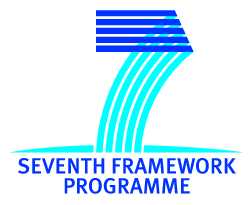ebbits partners are working on the final project prototypes which will illustrate the full functionality of ebbits as an Internet of People, Things and Services platform for product life cycle management.
The ebbits platform aims to bridge the gap between virtual enterprises and public information systems, human users and “things” in the physical world. In the agricultural domain, data from all stakeholders in the food production chain will be gathered and presented through mobile applications, providing traceability and interaction with the users such as the consumer who can rate the product. In the automotive manufacturing domain, data from various production processes, stations and systems will be monitored and analysed to provide life cycle costs and energy efficiency calculations. Monitoring of the manufacturing line will be possible through mainstream consumer devices such as tablets and smart phones which enable control of the industrial environment.
Knowing the story of the product
To provide product traceability for, e.g., beef the food traceability prototype collects and compiles all the necessary product life cycle data, making this data available to external applications via ebbits services. The data sources are visualised in the chart below. 
The prototype will create a link between the farm and the slaughterhouse where the animal is slaughtered and cut into bulk meat as well as the in-store butcher where the bulk meat is cut into smaller pieces.  It will be collecting information from the various transport phases of the lifetime of the meat and in particular, the transport from farm to slaughterhouse and of bulk meat from slaughterhouse to retail. 
The ebbits platform will integrate with an enterprise resource management system and include a mobile application (app) to retrieve and display the most relevant traceability information to the consumer, including cut, race, quality parameters and best before date with the possibility to rate the meat.
Related paper: The ebbits platform: leveraging on the Internet of Things to support meat traceability
Energy optimisation in car manufacturing
The full functionality of the automotive manufacturing prototype will combine refined versions of the solutions developed during the ebbits project, taking into account the different aspects of the production process. This includes four main areas:
1. A welding line simulation application with the main goal of validating the overall data flow between a framing station within the production line and the ebbits platform.
2. Process oriented energy monitoring and analysis. The aim is to provide a tool for monitoring different processes and compare energy consumption in the various production phases. Energy data is accessed in real time and calculations on consumption are made such as stand-by consumption, consumption during production on different levels (production line, stations and subsystems such as robots). Each production phase is energy profiled and analysis is conducted to calculate the energy efficiency.
3. Wireless sensor network integration with the ebbits platform with the main target of developing a specific proxy interface to expose process data from the field to the upper level of the platform.

4. Robot interaction through tablets/consumer devices: to test and certify the application of common consumer devices such as tablets and smart phones in an industrial environment.

The data extracted from all four refinement areas will provide the necessary input for life cycle costs and energy efficiency calculations.
/lbr/
to
the top  |











